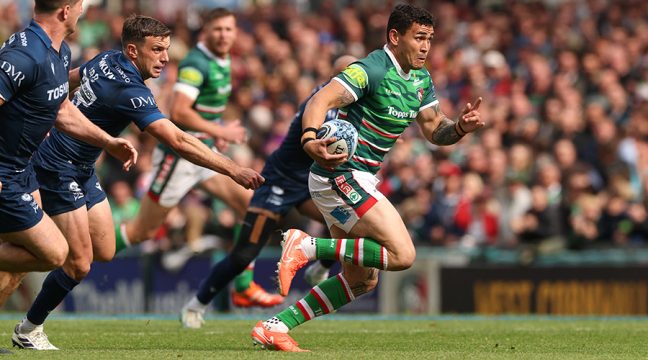Run Wild Retreats introduces a system of Mindful Running to a society in desperate need of a solution for stress and sustained performance.

Elinor Fish, Founder of Run Wild Retreats
At the center of health and fitness dogma is the promise that running boasts amazing benefits.
It seems we can’t open a magazine without being bombarded with reasons to lace up, mantras to push hard and products to make it all easier. Elinor Fish, a longtime runner, outdoor media writer, running brand rep and now personal trainer, laughed, saying, “Ah yes, this is at the heart of what keeps a lot of runners stuck in a cycle of chronic injury, burnout or illness.”
Could all the magazines and fitness experts be wrong? Could running be bad for our health? The answer is two sided. Fish explained to SGB in an exclusive one-on-one that running takes a negative turn when you add one little ingredient: Stress.
Sick, Tired and Burned Out
What is the unhealthiest habit a runner can have? Fish said, “ignoring stress.” To be clear, when Fish talks about stress she is referring to a variety of everyday influencers, including physical, nutritional, environmental, emotional and cognitive – which naturally send the body signals of being overwhelmed.
“We’ve become conditioned to ignore these signals and push ourselves to work harder, achieve more and move faster, despite what is happening internally,” Fish said. “As a result, we have never been more sick, tired, burned out and less healthy.”
Problems most runners encounter have to do with the marrying of (negative) everyday stress and (productive) running stress. “Most people are desensitized to the effects chronic stress has on their minds and bodies. It slowly eats away at the ability to recover from physical workouts, leading instead to unhealthy habits like poor sleep and overeating sugar, unhealthy foods and caffeine.”
Understanding Why
After several years as Managing Editor at Trail Runner Magazine, followed by a stint of public relations for run brands, Fish cut loose and began her coaching and retreat business, Run Wild Retreats, which focuses on spreading healthy, sustained running habits.
Although Fish coaches men and women, her retreats are geared toward the latter. “For a long time, all the science and literature around the health impacts of stress were based on studies conducted solely on men,” said Fish. “Only recently we understand that women’s stress responses are quite different.”
Throughout the entire active lifestyle industry, the women’s performance sector has gone through a revolution, with noticeable strides made over the past few years. Hydration companies like Osmo create drinks designed specifically to aid female physiology and nutrition recovery, activewear brands like Lexi Miller Cycling, Pearl Izumi and Headsweats, to name a few, either expanded design fits or began creating lines entirely for the female user, and womens’ program like Chicks with Picks offer unique adventures to boost female power in the outdoors. Fish and her Run Wild Retreats are a continuation of this movement.
Fish said, in terms of intellectual, emotional and biochemical hormonal responses, women have become prone to chronic stress-related illnesses at a rate much higher than men. That is not to say men have an aversion to stress, only that in combination with a stress reliever like running, the result of combined everyday and active stress is more likely to negatively affect a woman’s body and mind. This is because men and women use running differently.
Let’s look back to the magazine rack.
For women, running is weight loss, glowing skin, being better, skinnier, prettier than the girl next to you. This mindset has turned running into a competitive chore, soaked in a heavy layer of guilt.
Fish started a conversation with the women she wanted to help, asking what they wanted from running. The resounding reply: Connection.
“For women, running is largely about connection. When they feel supported, understood and encouraged, they are more confident and motivated to challenge themselves to higher goals,” said Fish. This was the beginning of Fish’s “Healthy Running Revolution,” where she works to foster ongoing support to women runners across North America via her website, blog and retreats.
The “Magic Pill”
Run Wild launched as a full-time business in 2014, after being in part-time operation for four years. Now, two years later, Run Wild offers programs around the world, including Costa Brava, Spain and Iceland. Past attendees have flocked to the ElinorFish.com website with testimonials of their transformation and thanking Fish for changing their lives for the better. Yes, these women thank Fish herself, as she remains fully involved with each immersive program.

Run Wild Retreat, where Fish teaches Mindful Running
The Retreats, including the upcoming Costa Brava Running + Wellness Retreat scheduled for April 23 – 29, 2016, are based around a system Fish calls MRTS.
MRTS stands for Mindful Running Training System, and was created by Fish to be the answer to both relieving negative stress and becoming the best runner you can be (whether you’re Kara Goucher or jogging the block for the first time). MRTS helps runners optimize training, address time management, build confidence and motivation while increasing the longevity of an overall running career/hobby. Another fitness stereotype is the concept of the “magic pill.” Well, mindful running might actually be it. MRTS means being aware of your body from the moment you hit the track, road, treadmill or trail. Fish calls it a “mental check-in with your body, heart and mind.”
“Everything you notice is part of a natural biofeedback system designed to inform you of when you’re thriving versus when you’re becoming depleted,” Fish said.
Treacherous Tech
Listening to your body sounds simple enough. However, Fish believes some products and trends prominent in the running industry are encouraging us to do just the opposite. Particularly fitness wearables and trackers.
“The answer’s not in data. It’s in the body.” -Elinor Fish

Wearable tech has made a transition from the fringes of the performance scene to become a common accessory worn as religiously as underwear. As the day goes on, the watch says stand, we stand, walk, we walk, with the big-picture intention being to reach a daily projected goal that will serve as one pinpoint of data in a get healthy plan. Furthermore, the numbers have shown people want this type of instruction and data collection. In fact, many tech and business publications, including Forbes, declared 2014 the “Year of the Wearable.” The same was said for 2015, as sources like The Guardian classified this year, “the year of Wearable Tech.” And although sale units appear to be dropping, this is not a result of less people buying into wearables, but more options with a larger range of use being made available.
This is where Fish sees the industry moving away from truly healthy practices. “I think there is an over-reliance on technology to help runners understand their bodies better,” she said. “All this data has a way of overwhelming people and causing confusion about what they should be doing.”
She believes technology is great for a lot of things, but can ultimately be a distraction from tuning into the body and its natural warning signs. “We tune out what we don’t like, push harder, then get injured. It ends up feeling much harder than it should.”
The Up Side
Stress will always be there. Pressure to push through pain and fatigue will be there too. But trainers like Fish and brands that want to see runners go faster while being healthy both inside and out are building presence and, more importantly, community. The industry has seen more specificity in design and functionality than ever before.
Fish added, “Runners’ needs are diverse and specific, so it’s great to see apparel that works for all sizes, body shapes and running styles.” For instance, Fish opts for Hoka One One running shoes – one trail model and one road. She found through trial and error that these shoes help her body adopt a natural running gait by employing more platform for a mid-foot landing and shorter stride length. Finding the right shoes ended her reoccurring iliotibial band syndrome. And that’s what it’s all about: Using the growing resources of the run-specific market to find your fit.
As a sport, running has grown exponentially due to its culture of inclusiveness.

Run Wild Retreat
Fish noted that as a sport, running has grown exponentially due to its culture of inclusiveness. Companies, athletes, trainers and one-milers are actively stepping away from overworking and cultivating sustained wellbeing. After all, whether you’re in it for the money or the joy, an injured runner is a lose-lose.
So how do we play a part in making ourselves and other runners the healthiest they can be? One, give mindful running a try; two, support yourself and others; and three, listen to advocates Elinor Fish – especially if it involves running with like minded women in exotic locations.
–Jahla Seppanen is the Associate Editor of SGB. Images courtesy of Run Wild Retreats










